- The U.S. just sent two of these bad boys to ward off Syrian encroachment on Kurdish militias.
Two Syrian aircraft tried to pass through Hasaka air space in northern Syria — an area where U.S. special operation forces were stationed with Kurdish militias. Once coalition F-22s were within a mile, the Syrians were on their way out.
The F-22 Raptor is the child of the Cold War; proof of American air dominance. This cutting-edge piece of machinery has been the most effective fighter jet since it was first launched almost 20 years ago.
Here’s 12 cool facts about the F-22, paired with some stellar images.

(U.S. Air Force photo/Tech. Sgt. Michael Holzworth)
1. The F-22 Raptor is designed so well Howard Hughes would blush. Minimized drag, minimized radar and infrared signature and horizontal tailfins to shield exhaust heat to minimize susceptibility to heat-seeking missiles are just some of this plane’s amazing features.

(Leading Edge Images photo/Glenn Bloore)
2. This plane is truly unparalleled. Not perpendicular, either. With no right angles it is harder to detect by radar. Everything on this jet makes it harder to detect, like sawtooth shapes on cockpit edges, landing gear doors and a coating that absorbs radar.

(U.S. Air Force photo by Senior Airman Kayla Newman/Released)
3. A warning from these two can create a de facto no-fly zone in seconds.

(U.S. Air Force photo by Master Sgt. Jeremy Lock)
4. A true marvel, the F-22 is the world’s first fifth-generation fighter that is fully operational. It has been the king of the skies for almost two decades.

(U.S. Air Force Reserve photo/Tech. Sgt. Dana Rosso)
5. In a dogfight, the F-22 makes other jets look like house cats. It has 480 rounds for a M61A2 20-millimeter cannon and two AIM-9 infrared and six AIM-120 radar guided missiles. That’s just for air-to-air combat.

(DoD photo by Senior Airman Zachary Perras, U.S. Air Force/Released)
6. For ground pounds, the Raptor has two 1,000-lb GBU-32 JDAMs and two AIM-120 missiles.
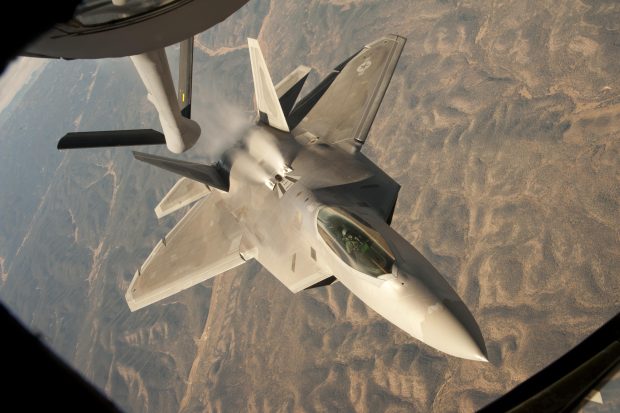
(U.S. Air Force photo/Airman 1st Class John Linzmeier)
7. Oh yeah, now with the AIM-9X Block II Sidewinder, the F-22 has the ability to strike behind itself.
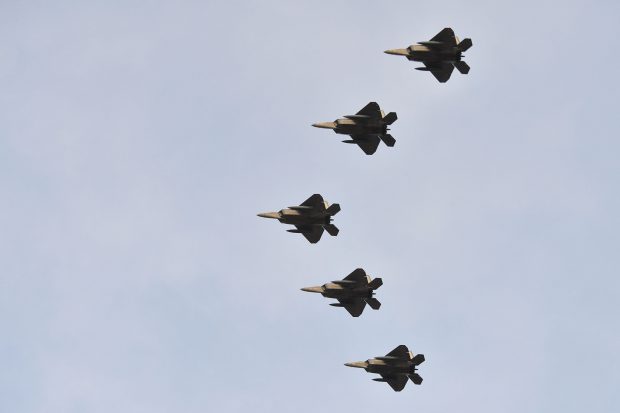
(U.S. Air Force photo by Airman 1st Class Dustin Mullen)
8. The F-22 can get to ungodly speeds, upwards of 1,500 mph, putting it in the Mach two class. That’s twice as fast as the speed of sound.

(U.S. Air Force photo/Staff Sgt. Alexander Martinez)
9. There are only 186 of these Raptors, and production ceased in 2011.
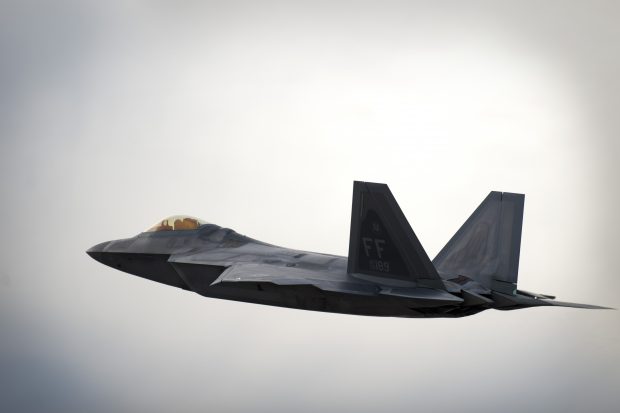
(U.S. Air Force photo by Airman 1st Class Joshua Kleinholz)
10. The F-22 is so incredible in air-to-air combat that no one will even engage. In 2013, U.S. Air Force Chief of Staff Gen. Mark Welsh disclosed a story about Lt. Col. Kevin Sutterfield while escorting a drone through Iranian international airspace, “He flew under their aircraft to out their weapons load without them knowing that he was there, and then pulled up on their left wing and then called them and said ‘you really ought to go home.'” They did.
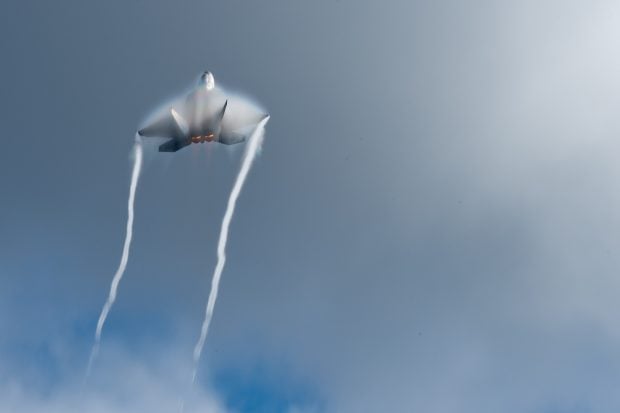
(U.S. Air Force photo/Staff Sgt. Joseph Araiza)
11. The F-22 is the most effective and intimidating jet on Earth. In a simulated combat exercise in 2006, a dozen raptors downed 108 opposing aircraft with no losses.
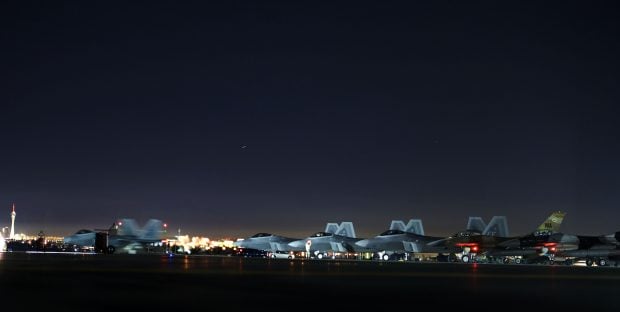
(U.S. Air Force photo/Airman 1st Class Mikaley Towle)

(U.S. Air Force photo/Tech. Sgt. Jason Robertson)
Follow Kevin Klenkel on Twitter
Send tips to kevin.dcnf@gmail.com.
All content created by the Daily Caller News Foundation, an independent and nonpartisan newswire service, is available without charge to any legitimate news publisher that can provide a large audience. All republished articles must include our logo, our reporter’s byline and their DCNF affiliation. For any questions about our guidelines or partnering with us, please contact licensing@dailycallernewsfoundation.org.


